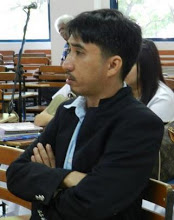In short, pretty well. Google Docs has gotten faster and more robust and served brilliantly for any school's word processing needs. Wherever possible that the average K-12 student could live within their browser quite happily. With Google Docs (my online suite of choice because I’ve really bought into the Google ecosystem, but Zoho provides great tools as well), presentations, spreadsheets, and documents are utterly simple to produce. Despite the changes to Google’s marketing and sales of their Apps suite, their educational version of Google Apps for your domain remains free.
Blogger (and countless other tools) make it easy to produce documents online and share them as needed; Google Docs provides great sharing and collaboration tools as well.
Googlegroups also is good because it allows collaboration between teacher and student. An editions to the work would be highlighted and any desire to return to the original version of the document can be made by the author of the text.
This proves critical when a student has to prepare or edit a document that he has but is unsure of the LAN ecology in which he is using. To assure that his documents will not be virus infested, using an online document application wherein his file is uploaded, he is able to simultaneoulsy prepare the text, email it to share/collaborate with a etacher and simultaneoulsy in real time see the comments and remarks made by his teacher on the paper. A real help for the teacher who may be mobile.
Gdocs is also a remarkable tool as it allows the teacher to create an online exam in Google forms. After creating the exam he may simply email the form to his students and who will answer and send the form back to the teacher who may maximize the results.
Google Docs, thus is one of the applications that uses cloud computing and is very advantegous to the educational sector.
One of the things im thinking of giving consideration (although majority of my students come from class CD and E families) is having an internet access point for WIFI notebooks. Some of my students, especially from the short term courses that I offer, accidentally bring in their notebooks from work. It would assist them in having online portfolios for their multimedia, visual graphics and animation classes. So what does this mean for students and teachers using cheap netbooks? It means that even for schools who turn to netbooks as an inexpensive way to get more computers into students’ hands, some dedicated facilities for more sophisticated computing are important. It also means that a bit of flash storage, whether an SD card or USB drive, could allow some multimedia files to be handled client-side or moved between dedicated PCs and the netbooks.
In the end I am hoping that I would be able to create more opportunities that would have students from class B and C families coming in and bring notebooks as one of their tools in school.



